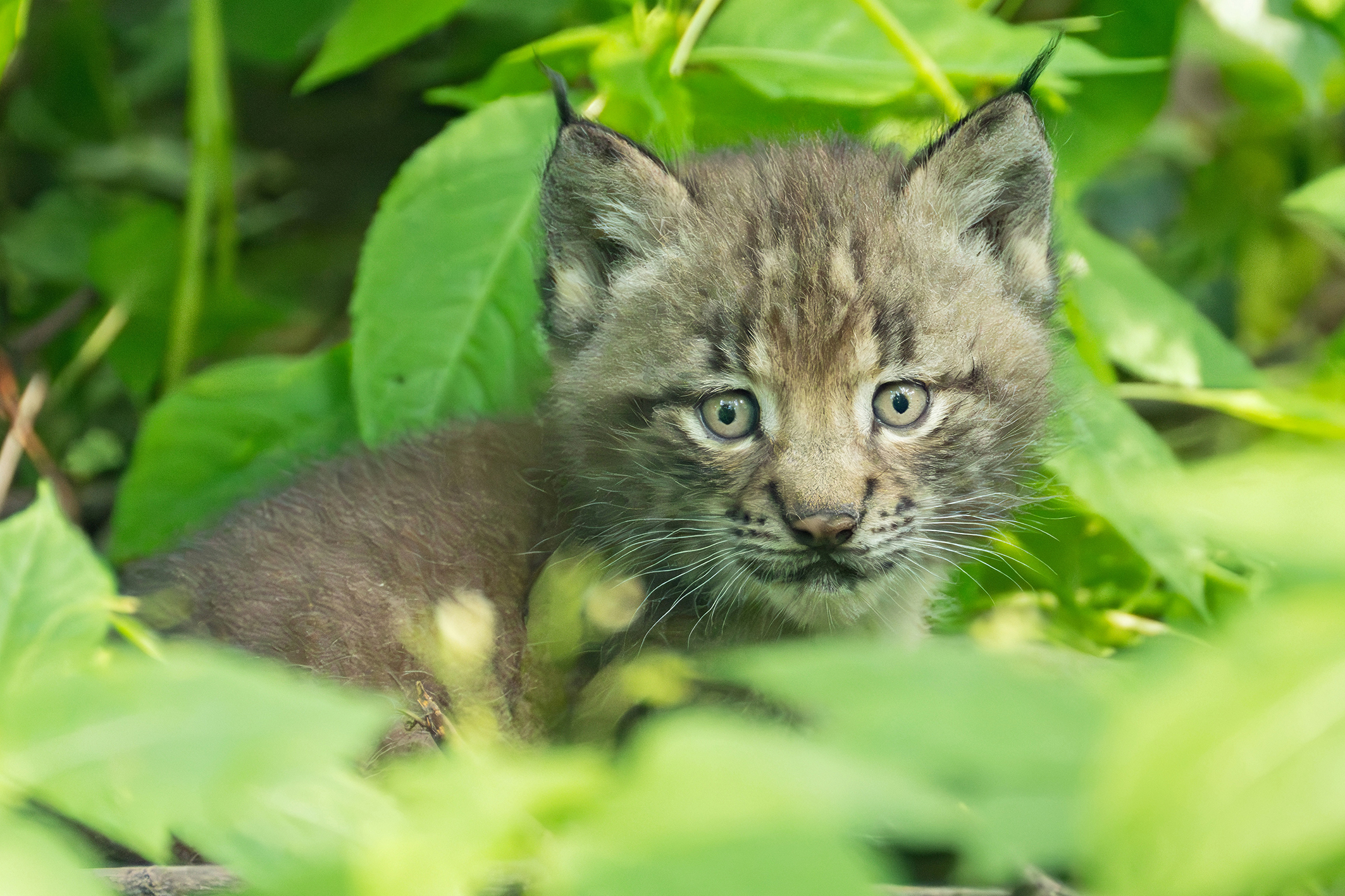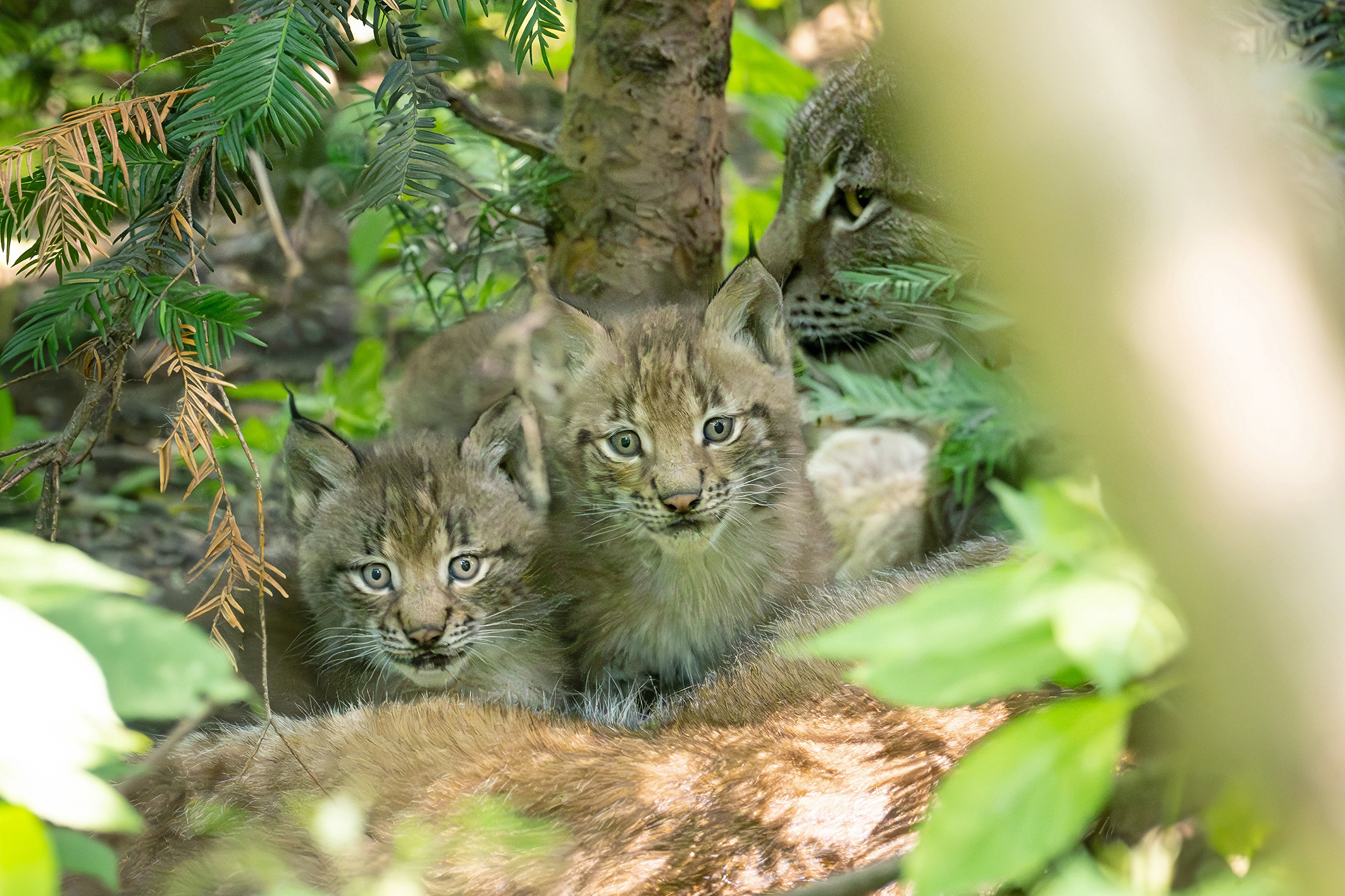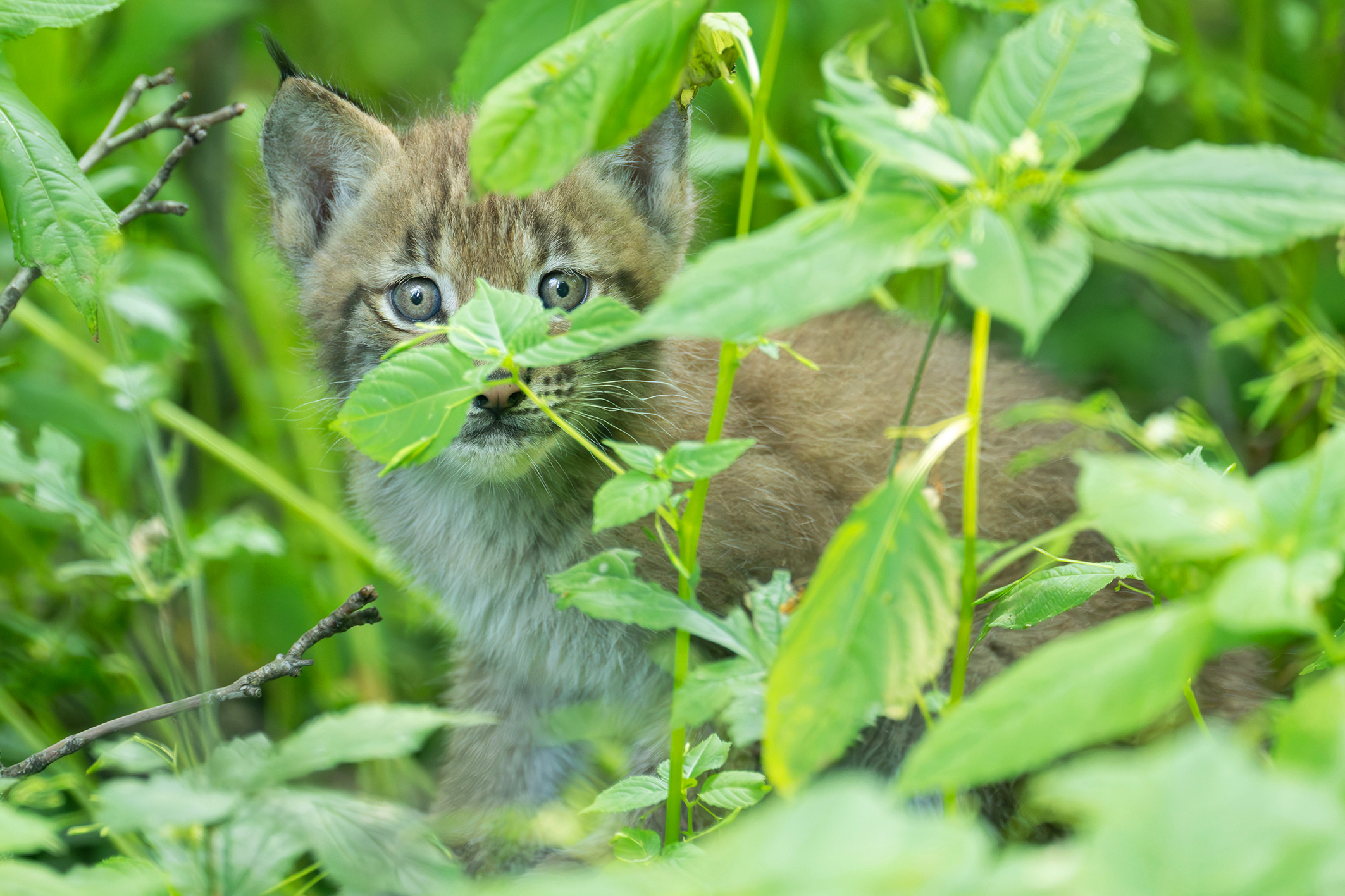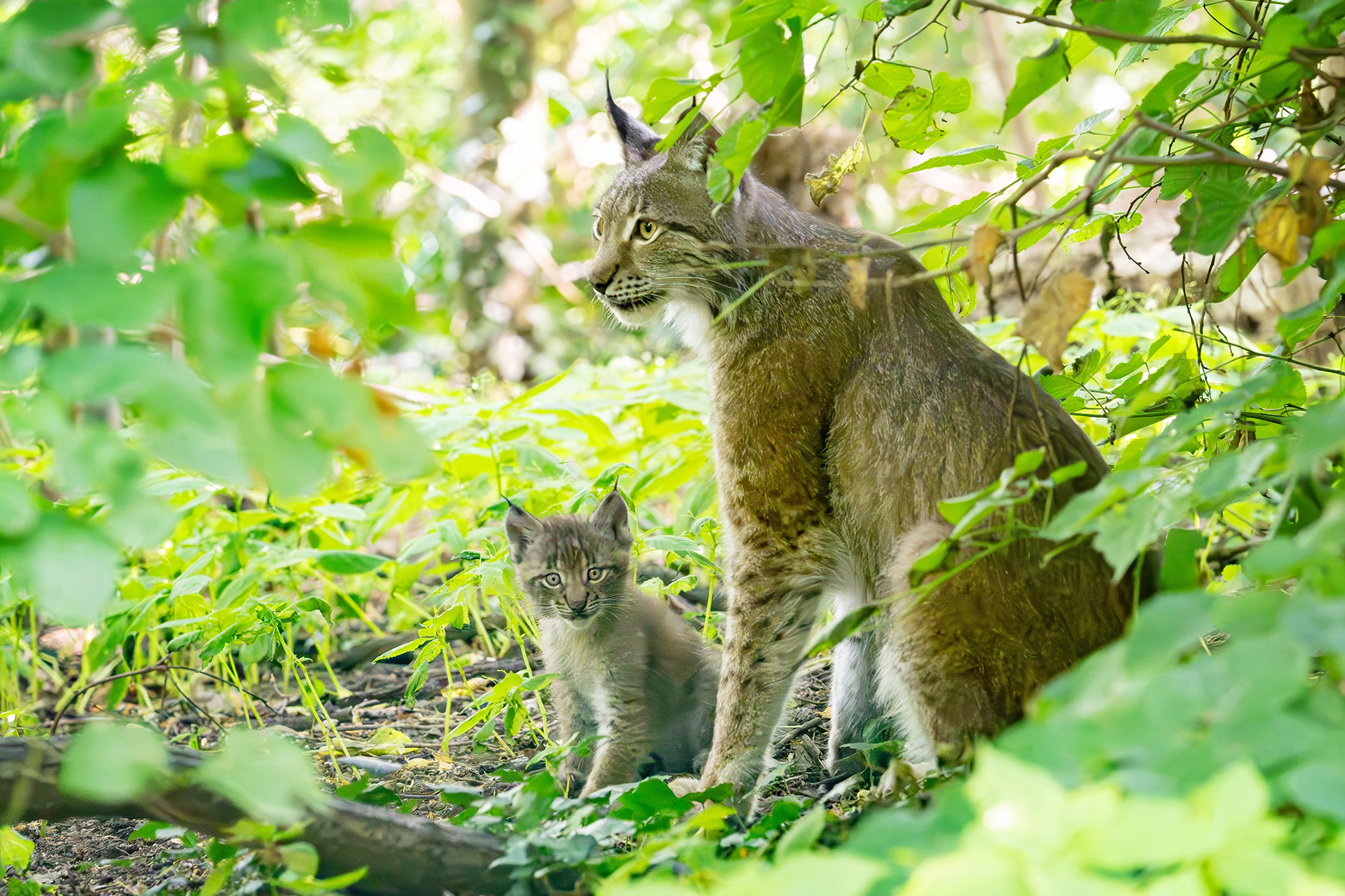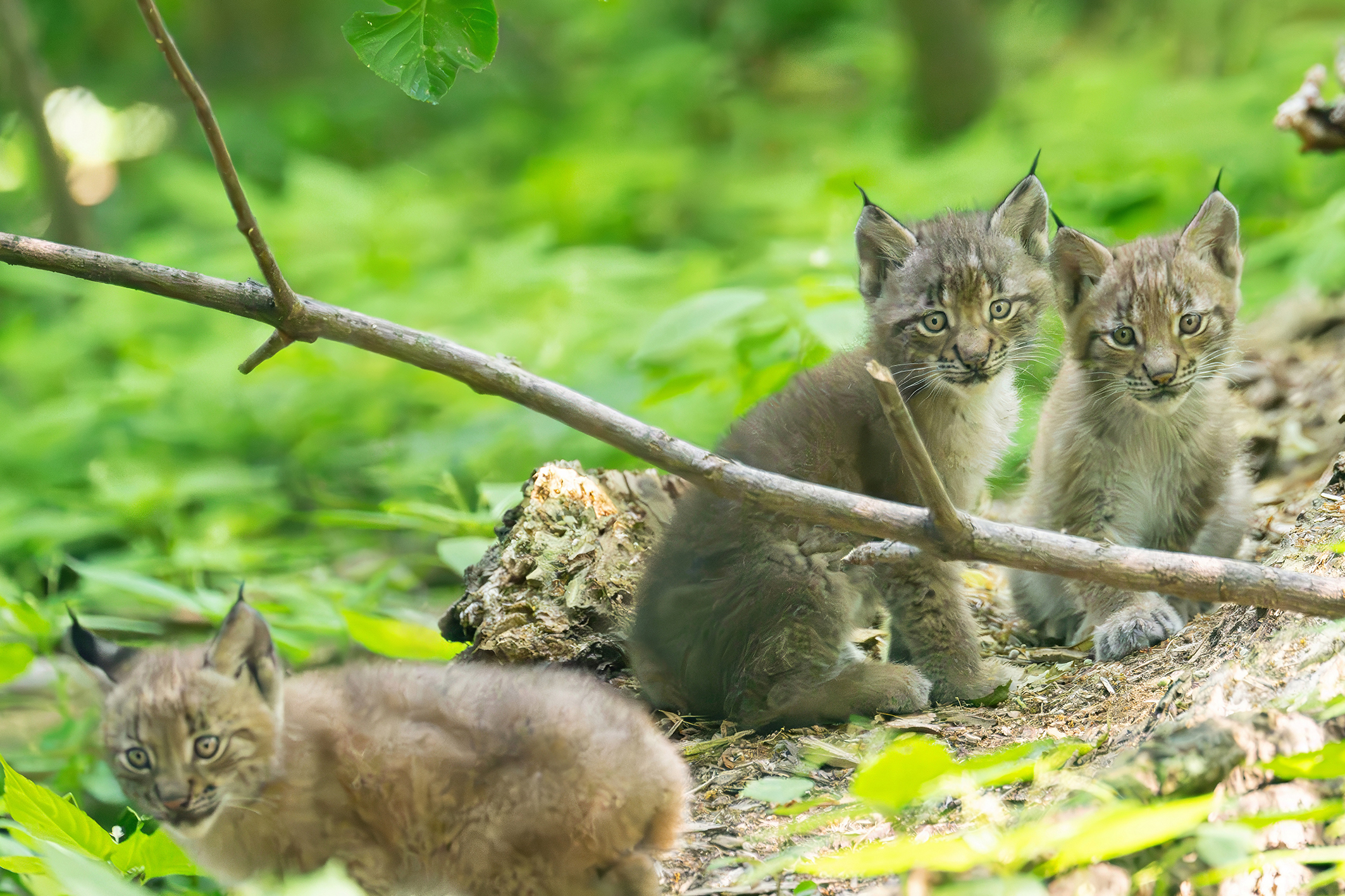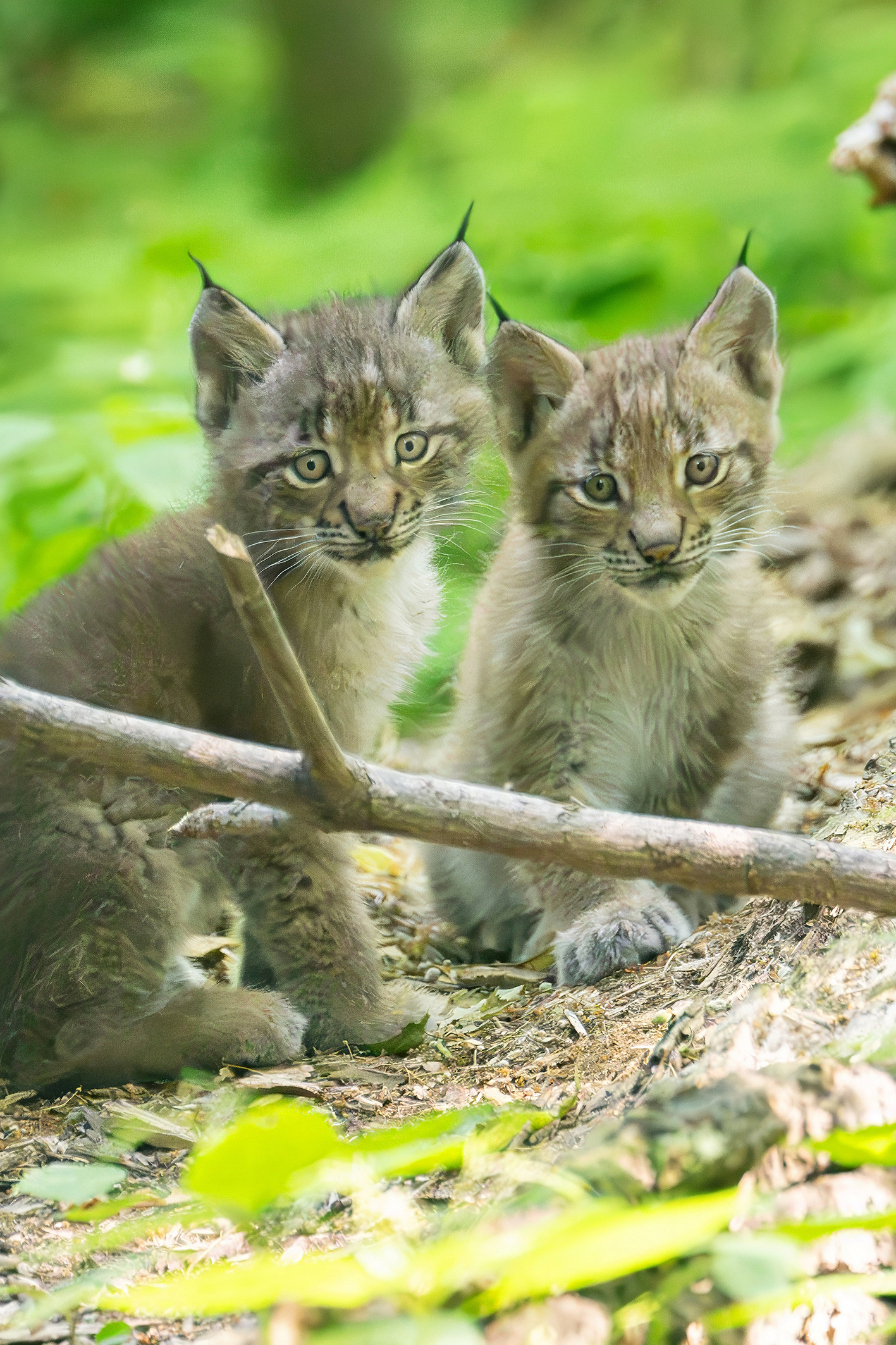Lynx Offspring at Vienna Zoo Schönbrunn
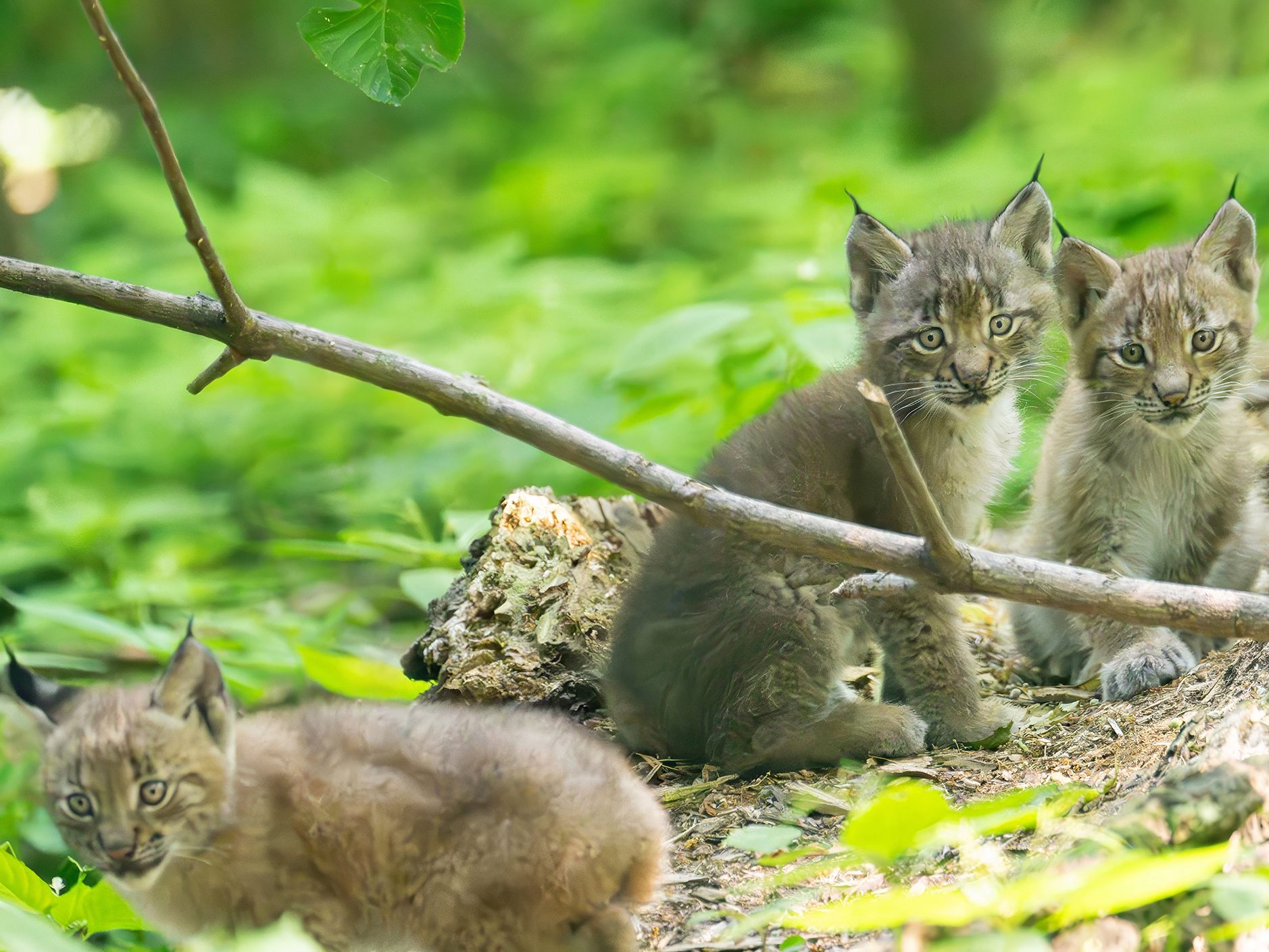
At birth, the newborn animals weighed about 300 grams, were blind, and completely helpless. In the first weeks, they were safely raised by their lynx mother in a shelter. "The triplets are developing splendidly," said the zoo director, Stephan Hering-Hagenbeck, happily. In Austria, the Eurasian lynx is classified as highly endangered.
Lynx Offspring in Vienna's Schönbrunn Zoo Success for Breeding Program
"By now, they are curiously exploring the large forest enclosure, sneaking up and chasing each other - just like cats do. All of this happens under the watchful eyes of the mother animal," reported Hering-Hagenbeck. The birth was an important success for the European Endangered Species Program (EEP). Last year, the breeding pair at Schönbrunn Zoo was newly assembled. The previous female moved to the Gdańsk Zoo (Poland), and a new one came from the Riga Zoo (Latvia). "We are very pleased that the new pair harmonizes so well."
Lynx Population in Austria Estimated at 35 Animals
Characteristic of lynxes are the short tail with a black tip, ear tufts up to six centimeters long, also called "brushes," and relatively long legs. There are four lynx species worldwide. The Eurasian lynx is the largest among them and at the same time the largest cat species living in Europe. It reaches a head-body length of 80 to 110 centimeters. In Austria, the species is highly endangered. The population is estimated at about 35 animals.
"The few lynx populations in Austria are small and separated by human interventions such as road construction, settlements, and intensively used agricultural areas," explained curator Rupert Kainradl. "The lack of genetic exchange between the isolated populations leads to inbreeding in the long term, thereby weakening their survival ability. Additionally, poaching poses a significant threat to these shy forest dwellers."
(APA/Red)
This article has been automatically translated, read the original article here.






